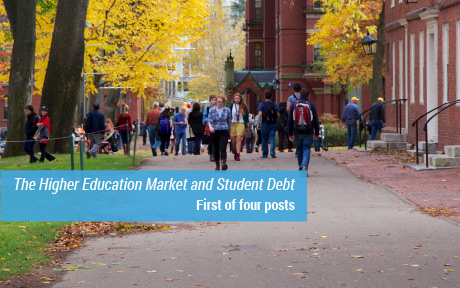From the Vault: Does Forward Guidance Work?
This post takes a look at research assessing the effectiveness of forward guidance in monetary policy communications.
U.S. Real Wage Growth: Slowing Down With Age
U.S. Real Wage Growth: Fast Out of the Starting Blocks

Much has been written about the aging of the U.S. population, but the importance of this trend for the economy and its evolution can easily be overlooked. This week, we focus on the aging of the labor force and explore its implications for the behavior of real wage growth.
Is There Discount Window Stigma in the United Kingdom?
At the onset of the financial crisis in the summer of 2007, news that Barclays had borrowed from the Bank of England (BoE) received wide media coverage. This information triggered concerns that the BoE’s lending facility may have become stigmatized, prompting market participants to interpret borrowing from the BoE as a sign of financial weakness.
Who Falters at Student Loan Payback Time?
This is the final post in a four-part series examining the evolution of enrollment, student loans, graduation and default in the higher education market over the course of the past fifteen years.
Now on Your iPhone: The Economic Research Tracker
The Federal Reserve Bank of New York today announced the launch of its Economic Research Tracker app for the iPhone®. The app, which highlights the insights and analysis of New York Fed economists, was first introduced last year for the iPad®. Today’s launch makes the app even more accessible to readers.
The Changing Role of Community‑College and For‑Profit‑College Borrowers in the Student Loan Market
In the first post in this series, we characterized the rapid transformation of the higher education market over the 2000-2015 period, a transformation that was led by explosive growth of the for-profit sector of higher education.













 RSS Feed
RSS Feed Follow Liberty Street Economics
Follow Liberty Street Economics